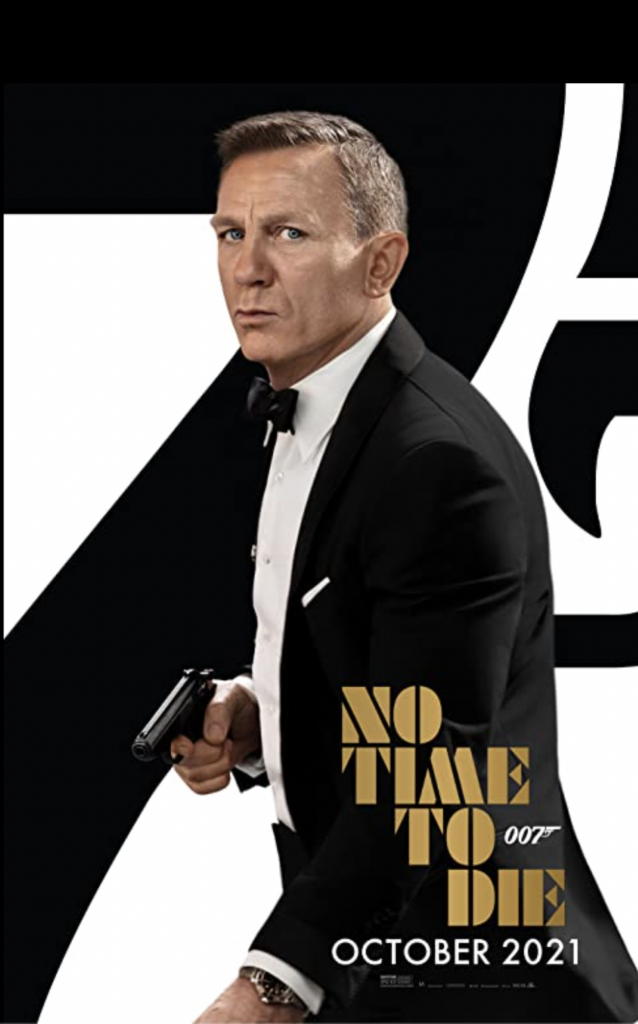“No Time to Die,” the finale to Daniel Craig’s James Bond pentalogy, was released Oct. 8 to much anticipation after more than a year’s postponement.
The movie, directed by Cary Joji Fukunaga, begins with a terrific title sequence, paired perfectly with the eponymous song by Billie Eilish. The subsequent three hours of the film contain great action and smooth direction, but several garbled plot points and underwhelming characters sour the overall experience, making for a fitting conclusion to the overall inconsistency of Craig’s era as 007.
Those who grew up watching Craig in his first Bond performance in 2006 will recognize the lasting impact the actor has had on the Bond character and the future of Bond films. From “Casino Royale” to “No Time to Die,” Craig has imbued Bond with classic witty confidence and extraordinary competence paired with a fascinating emotional core. Craig’s vulnerability in the role was quite a change for a character established as a symbol of the strong, silent stereotype of masculinity.
The character shift executed by Craig resulted in two of the best Bond films: “Casino Royale” and “Skyfall.” However, those triumphant performances alternated with two of the worst movies that the franchise has offered: “Quantum of Solace” and “Spectre.” Some of the more disappointing themes of these films are continued in “No Time to Die,” including the improved but still lacking chemistry between Bond and his love interest, Madeleine Swann (Léa Seydoux).

While the beginning of their relationship suffered during its introduction in the disappointing “Spectre” (2015), Daniel Craig and Léa Seydoux bring new life to the film’s core couple in “No Time to Die.” Craig himself continues his fantastic turn as James Bond with great intensity, classic wit and immense depth. Although his character can at times seem a bit quippy and intentionally dismissive of serious predicaments, such moments are kept to a minimum.
One of the primary issues of the film is the pacing. Though the first few action sequences were promising, the snappy pace established turns too rushed: The plot hurries from setting to setting, and in several instances, seemingly dire circumstances are resolved in an unexpectedly quick fashion. Many of the scenes seem to be a means to advance the characters toward a predetermined finale, instead of relevant in themselves. It seems as though Fukunaga was only interested in the ending of his own film and threw away the lead-up.
On the other hand, the cinematographic elements of “No Time to Die” hit the mark. The camera flows well throughout the movie, and the action sequences thankfully do not retain the choppy, quick-cut style of earlier films in the Bond franchise. The sound design is cleverly integrated into the plot, most notably in the muffled ambience accompanying Bond’s reaction to nearby explosions. The action sequences are adequately lit and shot, with highlights including Bond’s escapades on the villain’s island and in the misty Norwegian forest.
With a star-studded cast, it is not surprising that the film’s actors excel. Lashana Lynch and Ana de Armas shine as energetic and capable additions to the franchise in the characters of CIA agent Paloma and new “00” agent Nomi, respectively.
These strengths do not extend to the movie’s villains. Henchman Primo (Dali Benssalah), Logan Ash (Billy Magnussen) and evil scientist Valdo Obruchev (David Dencik) are either boring with little menace or outright cartoonish. Most notably, Rami Malek gives a thoroughly underwhelming performance as the film’s main villain Safin. Any potential for Malek’s solid acting is constrained by the limited writing of his character, who has confusing and unexplained motives.
“Casino Royale” was an effective reboot of the 50-year-old franchise, and “No Time to Die” was its average but lackluster conclusion. As a stand-alone film, however, “No Time to Die” sprinkles great action and fun character work into puzzling, rushed plot decisions and ineffective writing of antagonists.
The flawed plot in the last film highlights the challenges of ending a five-film series with five different directorial visions across fifteen years of changing Hollywood trends, especially one with such a culturally important character. Thus, the inconsistent “No Time to Die” encapsulates the problem with the series and reminds the audience of its past achievements but ultimately falls short in giving Daniel Craig’s Bond the send-off he deserves.













